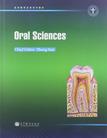医学教育改革系列教材
2012-5
孙正 高等教育出版社 (2012-05出版)
孙正 编
133
This textbook is written for medical students as an introduction to the study ofanatomy of the teeth and oral cavity, common diseases in the teeth and oral andmaxillofacial region. The book includes 12 chapters: introduction to dental andoral anatomy, cariology and endodontics, periodontal diseases, recurrent aphthousstomatitis, intraoral local anesthesia, dental extractions, infection and inflammationof the tooth and jaws, oral and maxillofacial injuries, temporomandibular disorders,maxillofacial pathology, geriatric dentistry, oral manifestations of systemic diseases.The text is written in brief and do not involve all aspects of the dentistry because it ismainly intended for medical students. But it can also be used as a reference for dentalstudents in the process of bilingual teaching. The aim of this book is to provide thestudents with the general idea and understanding of dentistry. One of the featuresof the book is that each chapter lists objectives, key concepts and introduction atthe beginning, summary and questions at the end, which enhances its usefulness toboth teachers and students. It is hoped this introductory book will help gain generalknowledge about dentistry.
Chapter 1 Introduction to Dental and Oral Anatomy 1.1 Dental Anatomy 1.2 Structures of the Oral Cavity Chapter 2 Cariology and Endodontics 2.1 Dental Caries 2.2 Treatment for Dental Caries 2.3 Tetracycline Stained Teeth 2.4 Wedge-shaped Defect 2.5 Dentine Hypersensitivity 2. 6 Incomplete Fracture or Split Tooth 2. 7 Diseases of the Dental Pulp and Periapical Tissues 2.8 Endodontie Treatments 2.9 Root Canal Therapy (RCT) Chapter 3 Periodontal Disease 3.1 Classification of Periodontal Diseases and Conditions 3.2 Etiology and Pathogenesis of Periodontal Diseases 3.3 Gingival Disease 3.4 Periodontitis 3.5 Treatment of Periodontal Disease Chapter 4 Recurrent Aphthous Stomatitis 4.1 Epidemiology 4.2 Etiopathogenesis 4.3 Clinical Features 4.4 Diagnosis 4.5 Differential Diagnosis 4.6 Treatment Chapter 5 Intraoral Local Anesthesia 5.1 Types of Oral Local Anesthetics 5.2 Armamentarium 5.3 Precautions 5.4 Injection Techniques 5.5 Nerve Block Anesthesia 5.6 Adverse Effects Chapter 6 Dental Extractions 6.1 Indications for the Extraction of Teeth 6.2 Contraindications for the Extraction of Teeth 6.3 Complications of Dental Extractions 6.4 Dental Extractions Chapter 7 Infection and Inflanmmtion of the Tooth and Jaws 7.1 Pulpitis 7.2 Soft Tissue Infections of Face Chapter 8 Oral and Maxillofacial Injuries 8.1 Assessment of the Injured Patient 8.2 Dental Injuries 8.3 Facial Soft Tissue Injuries 8. 4 Facial Fractures Chapter 9 Temporomandibular Disorders 9.1 Making Sense of Terminology 9.2 Occluso-musele Disorders 9.3 Intracapsular Disorders of the TMJ 9.4 Classification of Intracapsular Disorders Chapter 10 Maxillofacial Pathology 10.1 Odontogenic Diseases 10.2 Salivary Diseases 10.3 Premalignant Diseases 10. 4 Oral Cancer Chapter 11 Geriatric Dentistry 11.1 Changes in the Oral Cavity with Aging 11.2 Medical and Pharmacological Issues in the Dental Care of Older Adults 11.3 Dental Caries and Pulp Diseases in the Aging Individual 11.4 Aging and Periodontal Disease 11.5 Oral and Maxillofacial Surgery for the Geriatric Patient 11.6 Prosthetic Considerations in Geriatric Dentistry Chapter 12 Oral Manifestations of Systemic Diseases 12.1 HIV Disease 12.2 Gastrointestinal Diseases 12.3 Hematologic Disorders 12.4 Connective-tissue Disorders
版权页: 插图: Dental Caries Dental caries, or tooth decay, is an infectious micro-biological disease that results in localized dissolutionand destruction of the calcified tissues of the teeth. Dental caries is one of the most common chronic diseases in the world. It is ubiquitous in all popula- tions throughout the world and is the key factor re- sponsible for dental pain and tooth loss. The carious process affects the mineralized tissues of the teeth, namely enamel, dentine, and cementum, and is caused by the action of microorganisms on ferment- able carbohydrates in the diet. It can ultimately re- sult in demineralization of the mineral portion of these tissues followed by disintegration of the organ- ic material. Progression of the lesion into dentine can eventually lead to bacterial invasion and necrosis of the pulp and spread of infection into the periapical tissues, thus causing pain and even tooth loss. The first sign of a caries lesion on enamel that can be detected with the naked eye is often called a white-spot lesion. In other words, an initial lesion appears as a white, opaque change (a white spot). Dental caries is a chronic disease, a process that pro- gresses very slowly in most individuals. The disease is seldom self-limiting and, in the absence of treat- ment, caries progresses into destruction of the tooth and eventual infection of the dental pulp. 2. 1.1 Etiology The factors involved in the caries process, which in- clude dental plaque, diet, host and teeth, as well as time were presented in the 1960s in a model of over- lapping circles. Dental plaque The prevalence of mutans streptococci and lac- tobacilli is associated with dental caries. Streptococ- cus mutans is involved in caries formation from its initiation, while lactobacilli are so-called secondary organisms that flourish in a carious environment and contribute to caries progression. Streptococcus mu- tans and lactobacilli can produce great amounts of acids (acidogenic); are tolerant of acidic environ- ments (aciduric); are vigorously stimulated by su- crose. Diet Dietary carbohydrates are necessary for the bac- teria to produce the acids that initiate demineraliza- tion. Host and teeth Flow rate and buffering capacity may be the most important protective qualities of saliva. Both help neutralize and clear the acids and carbohydrates from dental plaque. Time Time indicates that the substrate (dietary sug- ars) must be present for a sufficient length of time to cause demineralization. On the other hand, it is clear that caries lesions do not develop overnight; in fact, it may take years for cavitation to occur.
《医学教育改革系列教材:口腔科学》编辑推荐:This book is written for medical students as an introduction to the study of anatomy of the teeth and oral cavity, common diseases in the teeth and oral and maxillofacial region.
